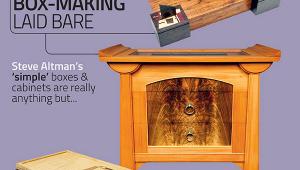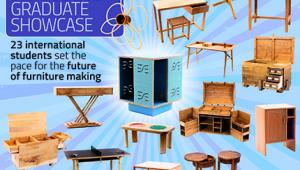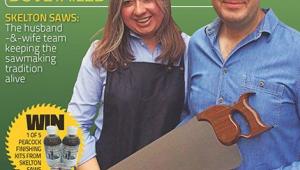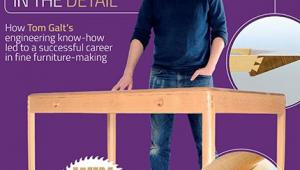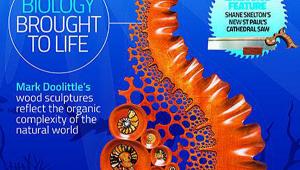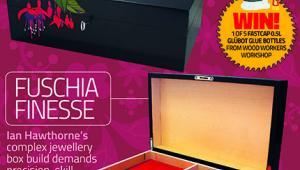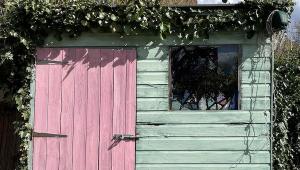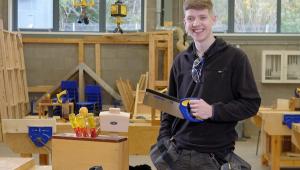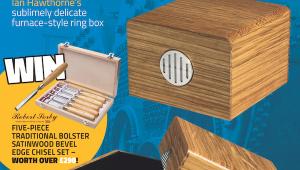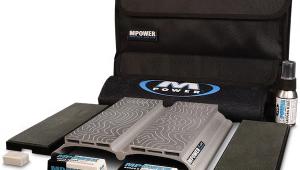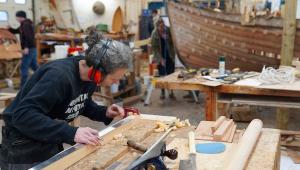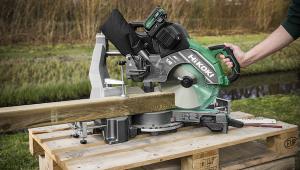In the latest Good Woodworking (GW216)
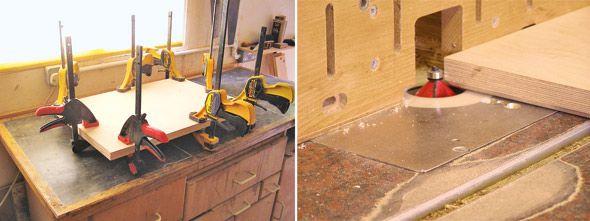
In the latest Good Woodworking (GW216) we’ve an exciting new instalment in the Significant Styles series. Martin Aplin takes a lead from Richard Rogers, the man who designed the Lloyds bank and introduced the controversial inside-out appearance.
Significant Styles is a collaborative affair, and we decided together with Martin Aplin to apply the ‘inside-out’ approach to an item of furniture. Here’s a look at how he went about his very unusual display cabinet…
I started by making the base, which is a rectangle of birch ply, in this case a lamination of two pieces 12mm thick. When the glue had dried, the edges were planed square, a large chamfer was run all round the top edge, and the four holes for attaching the frames were marked and drilled. Since a large flat base is unlikely to actually sit flat on the floor without rocking, three rubber pads were glued to the underside, two at the front and one at the back to create a three-legged stool arrangement that should prevent the piece from rocking."
Frames, bridles and dowels
The two support frames, meanwhile, are identical and are each made up of three sections of 30mm-square beech, joined with corner bridle joints, which were given a little more emphasis by making the tenons and cheeks project.
The bridle joint is essentially an open mortise and tenon joint, though obviously it’s not quite as strong, and can be forced out of square by sideways pressure. I was quite happy to use this joint, however, as the carcase of the cupboard is a very rigid box that will brace the frame and stop it from racking. The strength of the joint can be increased by running two dowels through it. Again, however, as the cupboard braces the frame, I only fitted one dowel - turned from some off-cuts of walnut and finished with a small chamfer on each end - in each joint, though they’re there as much for visual interest as reinforcement.
The frames are secured to the base by bolts inserted from underneath and threaded into cylindrical nuts fitted into cross-holes in the uprights. You can buy these nuts, of course, but I made my own from brass rod, chamfering the ends to match the dowels in the frame corner joints. Cross-holes had also been drilled in the uprights for the studs that secure the frame to the cupboard. Again, these holes were marked out using the drawings generated by the CAD programme.

- Log in or register to post comments
